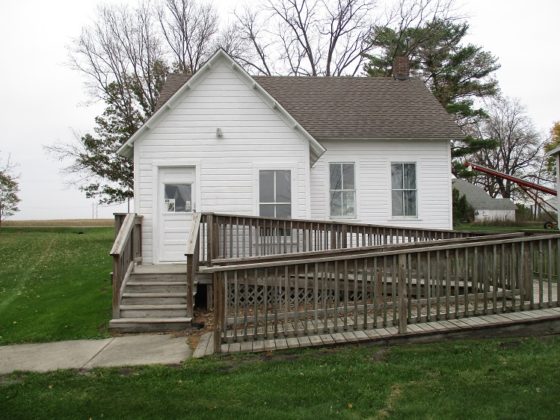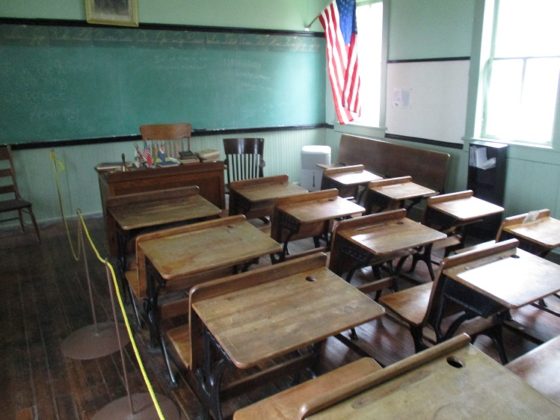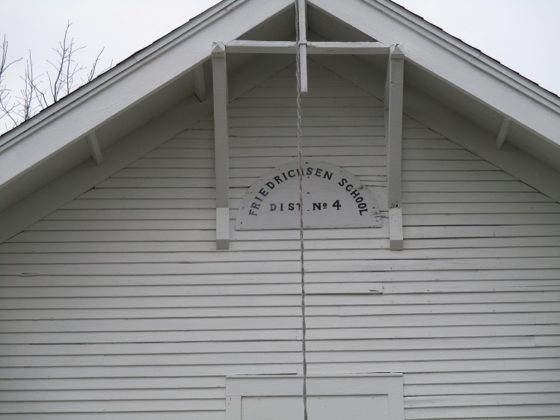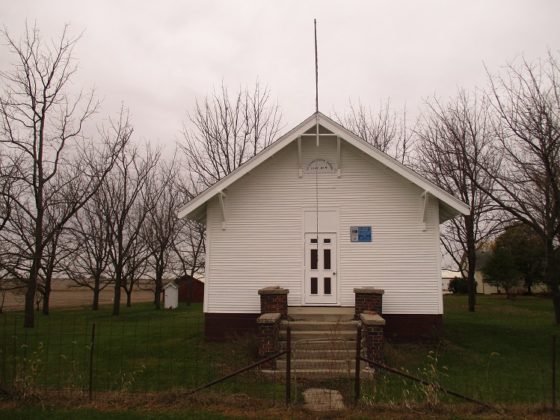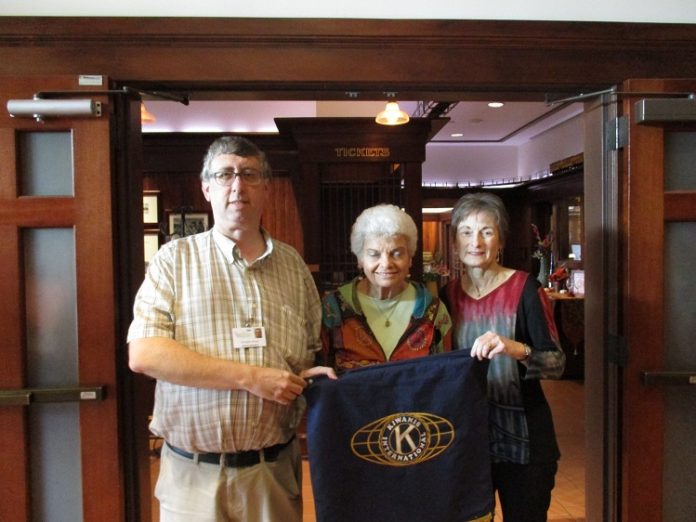
A great part of Americana is the concept of the country schools that many of our nation’s school children attended from the 1860s to nearly a century later. Will Cobb’s and Gus Edward’s 1907 song, “School Days,” has romanticized the concept of the country school to this day.
JoAnn Harmelink and Sue Leslie of the Nu Alpha Gamma Sorority recently stopped by the weekly noon luncheon of the Perry Kiwanis Club to discuss a project they are working on with a country school in our community. Harmelink is Alpha Gamma Nu co-president and Sue Leslie is the project chairperson.
Nu Alpha Gamma is a group of retired women educators who meet eight times a year. Their main project is to provide two scholarships to college juniors and seniors who are pursuing a degree in education.
The country-school project provides recorded audio commentary to visitors of the Alton School, which is located at Forest Park Museum.
Harmelink and Leslie tag teamed on the presentation to the Kiwanians, discussing the history of Alton School and other country schools in our community and outlining the audio-narration project.
Country schools existed in Iowa between the 1830s until the early 1960’s. The very first schools were called subscription schools. Students paid to attend.
The first free school in Dallas County opened between 1847 and 1848. It was located east of Adel.
The Alton School opened in 1867 northwest of Perry. It closed May 24, 1961. In 1964 preservationist and historian Eugene Hastie had the school moved to its current location at Forest Park Museum in order to preserve it. The school looks today as it did when it was closed.
When their usefulness ended and they were closed, many of the old country schools were then used as hog houses, converted to private residences, used as township voting sites or just left to rot and fall down.
Some schools had basements but others, such as the Alton School, did not.
The Alton School served many generations of citizens of the Perry area over many decades.
Iowa towns once had schools, and in the country schools were located every 2 miles. None of these country schools had telephones, electricity or running water. If there was an emergency, someone had to walk to the nearest farmstead for assistance.
Heat was provided by a stove, with the teacher lighting the fire each morning. Water was provided by a well outside. Students would pump water into a common bucket. Everyone would drink water from the bucket with a common ladle. An article about the last day of the Alton School showed students pumping water, and the article pointed out that the state tested the well every year.
Students would usually walk to school. In some cases, they rode horses, wagons or sleighs to school. Sometimes parents would bring the children, and in many cases they rode or drove the livestock pulling the wagon or sleigh. School was not called off because of snow, ice or cold.
All eight grades were taught by the teacher. There was no kindergarten. The younger students sat in the front, with the older students sitting in the back. The older students would assist the younger students. A country school usually had an enrollment of 15 to 20 students. The speakers said if a school went down to fewer than eight students, it would usually close by the next year.
At the end of eighth grade, the country school students had to pass a test to graduate from this grade. Town students did not have this requirement. In many cases, when students began high school, they were usually ahead of the town students.
Most of the boys would end their education after graduating from the eighth grade. Their future was farming. Many girls would not attend high school either because they would be married at 15 or 16. Trends changed over time, particularly after World War II.
It was not uncommon for some of the boy students to attend school but miss several days due to working at home on the farm and not graduate. They would be given certificates of attendance but not be eligible to graduate. Since there was no special education, students with special needs would attend school until they aged out. They would also not graduate but be given certificates of attendance.
The country schools would often shut down for a number of days during harvest season, and they usually let out a day for the local county fair, which in the past was held in September.
Teachers were usually young women 18 to 19 years old. They would have attended normal school training after high school and during the summers. In some cases, they taught their own siblings and cousins. Teachers had very strict requirements in terms of how they lived and presented themselves in public. They could not marry while under contract.
At one time country school contracts were for three months. The school year lasted nine months, and it was common to have a different teacher each term. Later contracts were for nine months.
The teachers would usually live with two or more families of the students during the course of the school year. Families took turns hosting them.
Lawrence Bice, a 43-year Perry Kiwanis Club member, discussed some of his experiences attending country school and described the country school setting on his property in Boone County south of Ogden. The school on his property is Friedrichsen School District No. 4.
Leslie and Bice discussed a conversation with centenarian Clairce Ross, who remembered standing in front of a window in the school watching a tornado go by when she was a student at the school.
Leslie retired from teaching in 2008. She has been a volunteer for several years at Forest Park. When school children visit Forest Park, she talks to them about the log cabin. She is often referred to as the cabin lady.
Leslie said she got the idea for the audio interactive museum from visiting the Dubuque River Museum. She discovered that this would cost $6,000 if hired out. The sorority received a grant from the Dallas County Foundation and used volunteers for the project.
John McGee and KDLS radio recorded the commentary that will be used in the museum. Doug Wood and Pegasus Cable Channel 12 in May recorded students who went back in time and experienced some time in the Alton School with an era teacher. Wood also recorded an interview that Leslie did with several area residents in September who attended country schools. This will be shown on Pegasus Channel 121-1 in the near future. Forest Park Museum and their staff provided much assistance with this project and let the school be used.
The four areas discussed with the interactive audio is Getting to School, a Typical School Day, Recess and Lunch.
There were stories shared about children bringing a tin foil wrapped potato and putting it in the ashes of the stove. By lunchtime it would be baked. Also in some cases each child brought an item, and the school made soup out of these combined items. Also students traded lunch items with each other.
In many cases, boys would hunt on their way to and from school. They would leave their rifles and shotguns in the back of the school rooms until they went home.
Although no precise date is set, Harmelink and Leslie hope to have the interactive audio recordings up and running in the near future.








